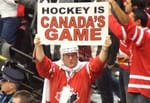Ice hockey is a sport built on competition at every level. From local rinks filled with young players learning to skate to professional arenas packed with thousands of fans, the drive to compete fuels every stride, pass, and shot. The essence of hockey lies not just in the speed or the physicality but in the relentless pursuit to outperform the opponent. Every second on the ice is a test of skill, willpower, and discipline, and that spirit of competition has shaped the game into one of the most intense and respected sports in the world.
Competition in ice hockey begins long before the puck drops. Teams prepare for games through exhaustive training sessions that test physical limits and mental endurance. Skaters practice acceleration drills, stickhandling under pressure, and split second decision making. Goaltenders work on reaction time and balance, knowing that one mistake can change the outcome of a match. Coaches study the tendencies of their rivals, searching for small advantages in positioning, line changes, or strategy. The desire to win turns preparation itself into a form of competition, where every player tries to earn a place in the starting lineup and every coach seeks a plan that cannot be countered.
At the professional level, the competition grows more sophisticated. The National Hockey League and other elite organizations feature athletes who have devoted their lives to the sport. Games are fast, physical, and unpredictable, with momentum shifting in an instant. Players compete not only against opposing teams but also against themselves, pushing for consistency and excellence in a season that demands both endurance and focus. The smallest differences in timing, spacing, or teamwork can decide who reaches the playoffs and who falls short. The intensity of this competition is what makes professional hockey captivating to watch. It is a display of precision under pressure, where success is earned through countless hours of repetition and adaptation.
Rivalries elevate the meaning of competition in hockey. Historic matchups between teams like Montreal and Toronto or Chicago and Detroit go beyond simple athletic contests. They represent decades of pride, identity, and tradition. Every meeting between these teams carries emotional weight, not just for the players but also for fans who see these games as part of their community history. Rivalries demand a higher level of commitment. Players understand that every shift matters more, that every hit, pass, and goal will be remembered long after the game ends. This heightened intensity makes rivalry games some of the most thrilling events in sports.
International hockey adds another dimension to competition. When players represent their countries in tournaments such as the Olympics or the World Championships, the stakes reach a new level. National pride combines with professional ambition, and the result is an atmosphere that transcends the game itself. Competing for a flag or anthem demands discipline, teamwork, and selflessness. It reminds players that the essence of hockey is not only about personal success but also about contributing to something greater. The international stage showcases the unifying power of competition, bringing together athletes from different cultures who share the same passion for excellence.
Competition also defines the developmental side of hockey. Youth tournaments and junior leagues create a structured environment where players learn the values of effort, respect, and sportsmanship. Young athletes experience the thrill of scoring a goal or making a key save, but they also learn how to handle defeat and recover from mistakes. Coaches play a crucial role in shaping these experiences, teaching that competition is not only about winning but about improving with every game. Through this process, players develop resilience that benefits them both on and off the ice.
Even at the collegiate and amateur levels, competition continues to drive growth. University programs across North America, Europe, and Asia build teams that combine athletic ambition with academic commitment. Players compete for scholarships, championships, and professional opportunities. The level of play is often remarkably high, and the emotional connection between student athletes and their schools deepens the sense of purpose. College hockey captures the purity of competition, where passion often outweighs fame or financial reward.
Beyond organized leagues, competition remains alive in every community rink. Pickup games among friends often carry the same determination as professional contests. Local tournaments bring together players of all ages, each eager to test their skills and experience the rush of the game. This grassroots competition sustains the culture of hockey, ensuring that the sport remains accessible and inspiring to new generations. The shared respect for fair play and effort keeps the competitive spirit balanced with camaraderie.
What makes competition in ice hockey unique is its dual nature. It is fierce yet respectful, aggressive yet controlled. Players battle for every inch of ice, but when the final horn sounds, they shake hands as a symbol of mutual recognition. That ritual captures the true meaning of hockey’s competitive spirit. It is not only about defeating an opponent but about earning their respect through effort and integrity.
The spirit of competition continues to shape the future of ice hockey. As technology advances and training becomes more specialized, players are finding new ways to push boundaries. Yet the foundation of the sport remains unchanged. Whether it is a championship final or a local league game, the drive to compete with honor and intensity defines what it means to play hockey. It is the bond that connects players across eras and continents. The sport thrives because competition gives it purpose, direction, and meaning.


